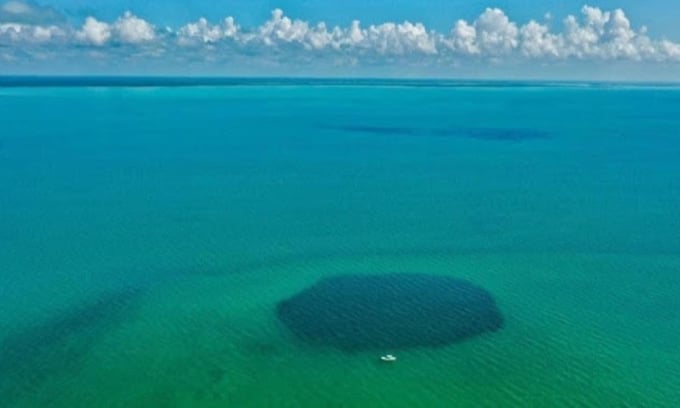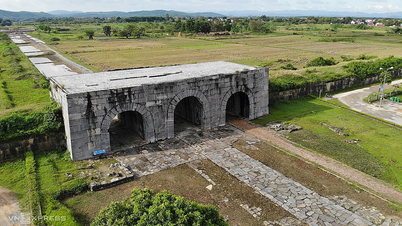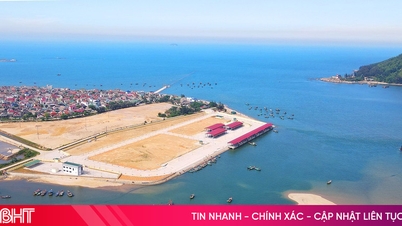Mexico's Taam Ja' Blue Hole is at least 420 m below sea level and may be connected to a system of hidden caves and tunnels.

The underwater Taam Ja' Blue Hole in Chetumal Bay, Mexico. Photo: Joan A. Sánchez-Sánchez
During a dive expedition on December 6, 2023, to determine the environmental conditions prevailing at Mexico's Taam Ja' blue hole, researchers discovered that it is the world's deepest underwater sinkhole, though they haven't even measured its bottom. The new study, published in the journal Frontiers in Marine Science on April 29, was conducted by Juan Carlos Alcérreca-Huerta, a postdoctoral researcher at Mexico's National Council of Science and Technology, and colleagues.
Blue holes are vertical water-filled caverns, also known as sinkholes, that occur in coastal areas where the bedrock is made of soluble materials such as limestone, marble, or gypsum. They form when surface water seeps through the rock, dissolving minerals and causing cracks to widen, eventually causing the rock to collapse.
New measurements show that the Taam Ja' blue hole in Chetumal Bay, off the southeastern coast of the Yucatan Peninsula, is at least 420 meters below sea level. This makes the structure 146 meters deeper than when it was first discovered in 2021 and 119 meters deeper than the previous record holder, the 301-meter-deep Sansha Yongle, also known as Dragon Hole, in the South China Sea.
During the expedition late last year, the team took measurements using a conductivity, temperature and depth (CTD) meter – a device with a set of probes that reads and transmits water characteristics to the surface in real time via cable. The CTD also revealed several different layers of water in the Taam Ja' blue hole, including a layer below 400 meters where the temperature and salinity conditions are similar to the Caribbean Sea, and nearby coastal reef lagoons. This suggests the blue hole may be connected to the ocean through a network of hidden tunnels and caves.
In 2021, scientists were unable to confirm the maximum depth of the Taam Ja' blue hole due to limitations of the equipment. The CTD in the new study also could not find the bottom of the hole because it only works at a maximum depth of 500 m. The team took the CTD down to this depth, but the cable attached to the device may have been pushed by the water current or hit a rock ledge, causing the device to stop working at a depth of 420 m.
Next, experts plan to explore the maximum depth of the Taam Ja' blue hole as well as the complex underwater cave and tunnel system. They believe that this deep blue hole may also contain biodiversity that needs to be explored .
Thu Thao (According to Live Science )
Source link



![[Photo] Worshiping the Tuyet Son statue - a nearly 400-year-old treasure at Keo Pagoda](/_next/image?url=https%3A%2F%2Fvphoto.vietnam.vn%2Fthumb%2F1200x675%2Fvietnam%2Fresource%2FIMAGE%2F2025%2F12%2F02%2F1764679323086_ndo_br_tempimageomw0hi-4884-jpg.webp&w=3840&q=75)


![[Photo] Parade to celebrate the 50th anniversary of Laos' National Day](/_next/image?url=https%3A%2F%2Fvphoto.vietnam.vn%2Fthumb%2F1200x675%2Fvietnam%2Fresource%2FIMAGE%2F2025%2F12%2F02%2F1764691918289_ndo_br_0-jpg.webp&w=3840&q=75)




































































































Comment (0)